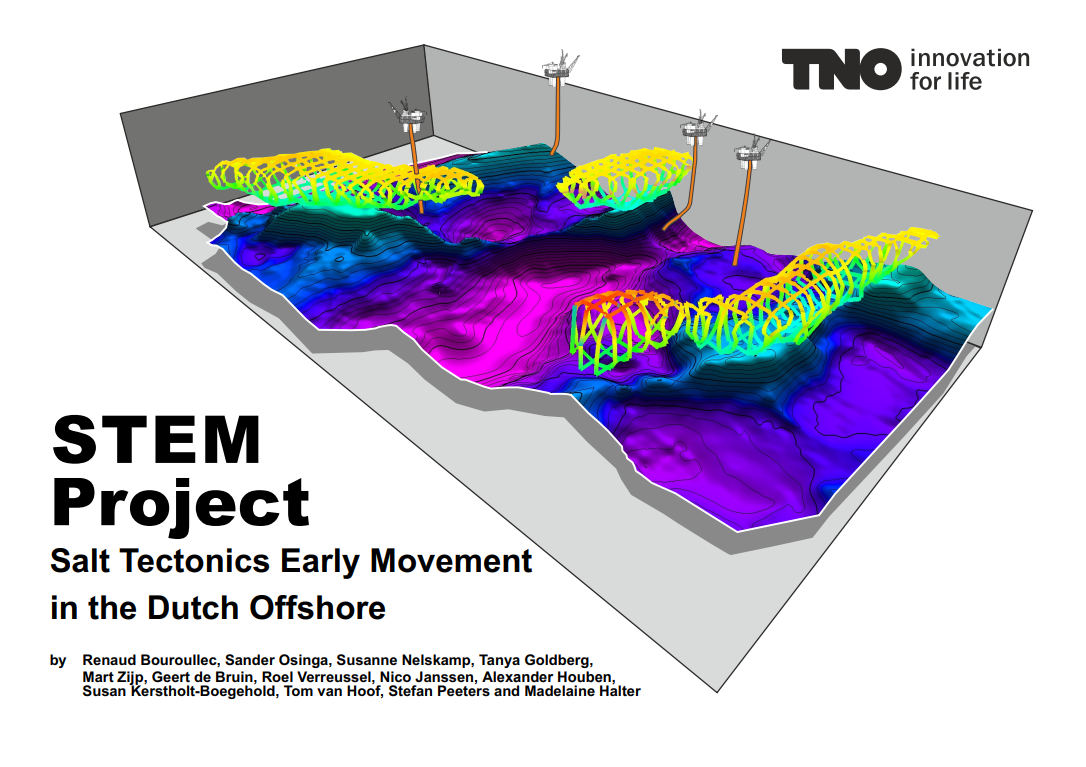STEM Project – Salt Tectonics Early Movement: Impact on Triassic and Jurassic Stratigraphy and on Petroleum Systems in the Dutch Offshore
Authors: Renaud Bouroullec, Sander Osinga, Susanne Nelskamp, Tanya Goldberg, Mart Zijp, Geert de Bruin, Roel Verreussel, Nico Janssen, Alexander Houben, Susan Kerstholt-Boegehold, Tom van Hoof, Stefan Peeters and Madelaine Halter
TNO report 2017 R11242
The Triassic structural evolution of the Central and Northern Dutch offshore was investigated in the STEM Project. This research focused on the early salt tectonic events and their expression at different locations in the basin. The main aim of this project was to provide insights on the location, geometry and kinematics of individual salt systems, such as salt welds, allochthonous salt systems, growth fault/raft systems and collapse salt bodies, and to build a comprehensive structural evolution of the study area during the Triassic.
This research was carried out at two scales of investigation: (1) at a regional scale; and (2) at a block scale through three case studies. The project used a multidisciplinary approach by combining seismic-based structural analysis, 2D structural restoration, palynological analysis and geochemical analysis. The first two techniques were used to understand the salt tectonics of individual salt systems and of basin, while the latter two techniques were used to distinguishing between in-situ Triassic salt and remobilized Permian salt at selected locations.
The STEM Project provides a new structural framework for the Triassic in the Dutch offshore and has successfully reached the proposed goals. The results indicate that salt tectonics played a strong role in shaping the basin and specific structures as early as the Middle Triassic. The implications of this research are far reaching in regards of the petroleum geology of the study area and specifically the implication on Triassic/Jurassic reservoir characterization and hydrocarbon maturity and migration modelling in the vicinity of salt structures.
